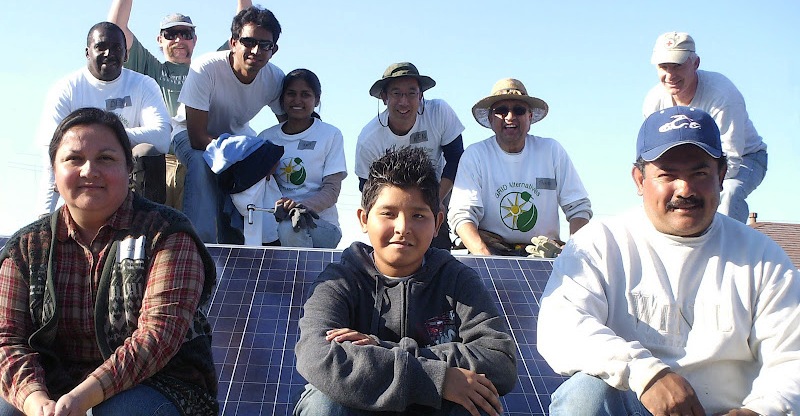
People in low-income communities struggle with high rates of unemployment and limited economic opportunities. The Green Energy/Green Jobs Campaign advocates for programs and policies that invest in local communities to create career-track jobs and create a new energy economy.
In addition to having the greatest potential to meet our energy needs, {tip Also Known As::In the business, we call this Local Distributed Generation}rooftop solar{/tip} also boosts local jobs. For example, a recent report from UC Berkeley has determined that local distributed resources create three times as many jobs as a “business as usual” renewable energy implementation—mainly centralized plants located outside the load centers.
EHC wants to make certain people living in low income communities can take advantage of these job opportunities.
Accomplishments include:
- In 2010 we hosted a two-day energy efficiency training for our staff and allies, including representatives of City Heights Community Development Corporation. These workers are conducting energy assessments in hundreds of homes in Barrio Logan, Sherman Heights, Logan Heights, City Heights and National City.
- In all EHC energy efficiency assessment and education programs, we refer eligible families to programs that provide free energy efficiency retrofits. These energy efficiency retrofit programs are done by nonprofit organizations that have specific energy efficiency job training programs and include the MAAC Project’s Pathways Out Of Poverty, San Diego Urban Corps’ Green Streets, and Grid Alternatives.
- EHC successfully partnered with San Diego Gas & Electric to provide 1,000 free energy efficiency retrofits for low-income families with work being partially done by the MAAC Project’s Pathways Out Of Poverty program apprentices.
- Worked with San Diego City Council President Tony Young to create a Green Energy Jobs task force.
- In 2011, we influenced the outcomes of SDG&E's Smart Grid Deployment Plan by successfully having them integrate language and policy outcomes that we wanted. These items include:
- In the Vision Statement: "It is also important to SDG&E that all market segments have access to distributed energy systems, including underserved communities."
- In the Vision Statement and Roadmap section: "SDG&E has a strong commitment to ensure its workforce reflects the labor markets it serves. Therefore, as with all of its recruitment strategies, SDG&E will ensure the outreach for all employment opportunities related to Smart Grid is inclusive to all communities."
- We secured a “local business” preference in their pending release of a RFP for 100MW of solar in San Diego County by SDG&E. “In weighing different proposals, if two are close in value, the solar developer that agrees to subcontract with a local business and local hire will win the bid.”
- In 2012, we influenced the California Public Utilities Commission to direct large gas and electric companies, like SDG&E, to do a number of things:
- Develop a comprehensive Workforce Education and Training (WE&T) program that increases inclusion of disadvantaged workers and connects training with job opportunities.
- Track WE&T data throughout all efficiency programs, so we learn where the opportunities are for improving inclusion of disadvantaged workers.
- Fund classes and collaborate with community colleges, adult education programs, & community-based organizations.

